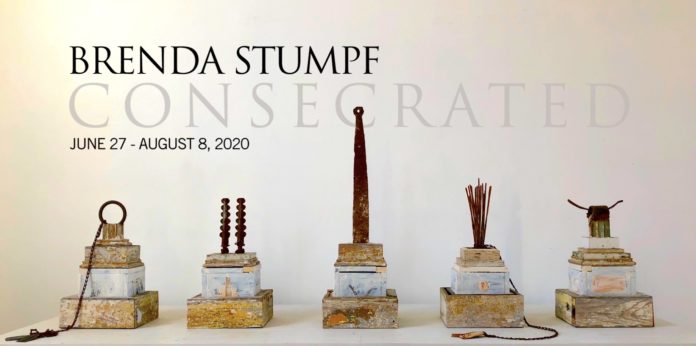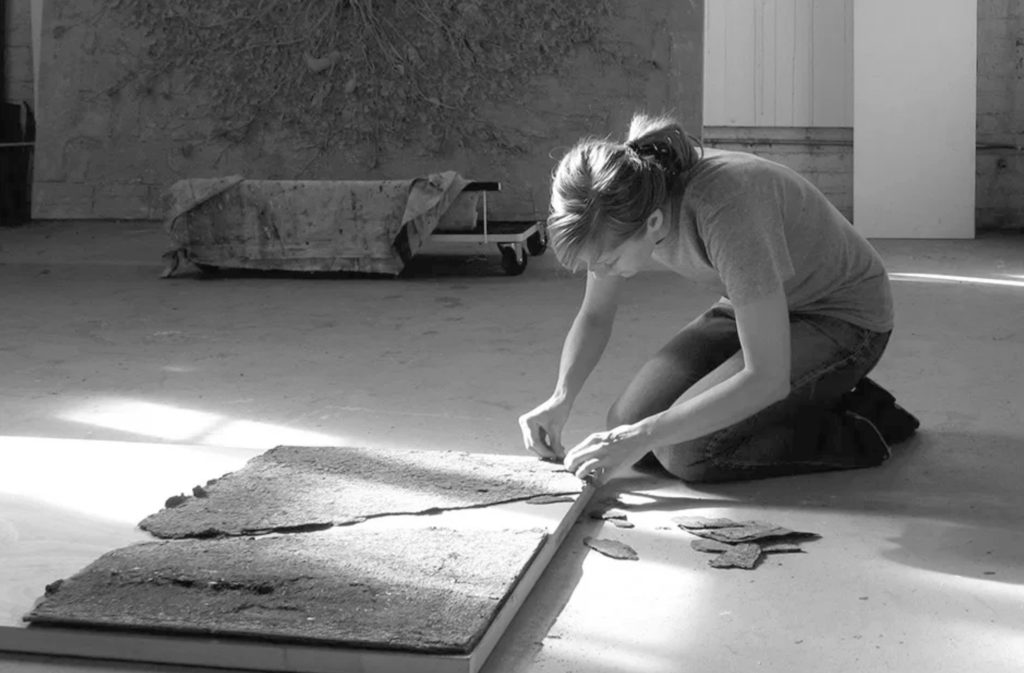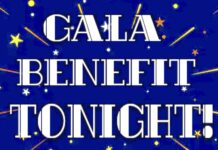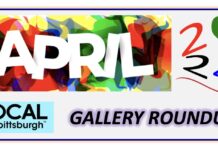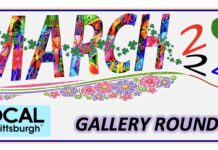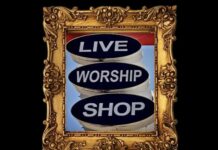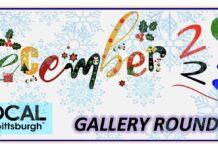SAND, ROPE, plastic flowers, animal bones, wallpaper scrapings, steeped tea bags, discarded bits of metal and wood … utterly common materials Pittsburgh artist Brenda Stumpf uses to fashion uncommon art evoking an allusive swirl of poetry, mythology, mysticism, ancient history, cycles of death and rebirth.
Her new show Consecrated opens with a 6-9 p.m. reception Sat. June 27 at ZYNKA Gallery, 904 Main Street, Sharpsburg, and runs from June 27-Aug. 8, 2020.
The Parma, Ohio, native has exhibited in museums and galleries since the mid-1990s with work residing in more than 350 private collections throughout the world (www.brendastumpf.com). She recently spoke with LOCALPittsburgh about her creative process and future inspirations.
___________________
LM: How did you begin working in your current medium?
BS: Until 2003 I’d been doing colorful, calligraphic, musical kind of linework, and then objects started creeping in as little elements to that. I started collecting materials and objects — found things, disassembled things. Materials became malleable objects, and they started becoming sculpture, which I had never thought I’d do, and then they became full-blown reliefs. I find materials intriguing because you can just keep going forever. I can play in a way that’s more interesting and challenging than painting had been for me in the past. I like to dig around with my hands; I guess I’m more of an archeologist.
LM: Does that reinforce your connection with the natural elements you use?
BS: Nature for me has always been magical. I like things that take your mind out of a particular time. Nature for me feels primordial and older than working with items that have a transitory pop-culture connection. As a small child I looked at stacks of National Geographic magazines and what I saw were buried temples, skeletons, lost treasure, old maps … all mysterious. As an artist, I need to find things that are mysterious to me — mythology, symbolism, and so on. I need a lot of space to dig around in and find the truth of what I’m seeing.
LM: That “digging around” gives you more freedom, I suppose. More eureka! moments.
BS: My art isn’t linear. It’s holographic. It’s more like a constellation, with this point here and this point here and this point here and then it all starts to connect and become visible as a world but not as a line from Point A to Point B. And it always depends on where you’re coming from with what’s going on in your life at the time. I knew when I was six that I wanted to do art. I still have a playfulness that makes me want to understand how I see things, how I’m changing, why I may be stuck in a pattern.
LM: So you don’t usually proceed along a pre-set path?
BS: I do not. 95% of the time I don’t know what the hell I’m going to end up with. Obviously, if you start with a giant canvas, you’ll probably end up with a giant piece that fills the space. But maybe not. For me it’s all about the materials and how you figure them out in that creating dialogue. And the dialogue includes stuff I’ve been reading, stuff that’s going through my life; this is where the constellation starts, the different points of reference like different stars start happening … and because the work is labor-intensive and takes a lot of time, the richness of dialogue and embeddedness of what you start to feel halfway through is when a world takes shape. Things get really clear and delineated about what can and can’t happen, because there’s this world that starts to click into place and you know where the edges of this world end and something else begins, and you play within it.
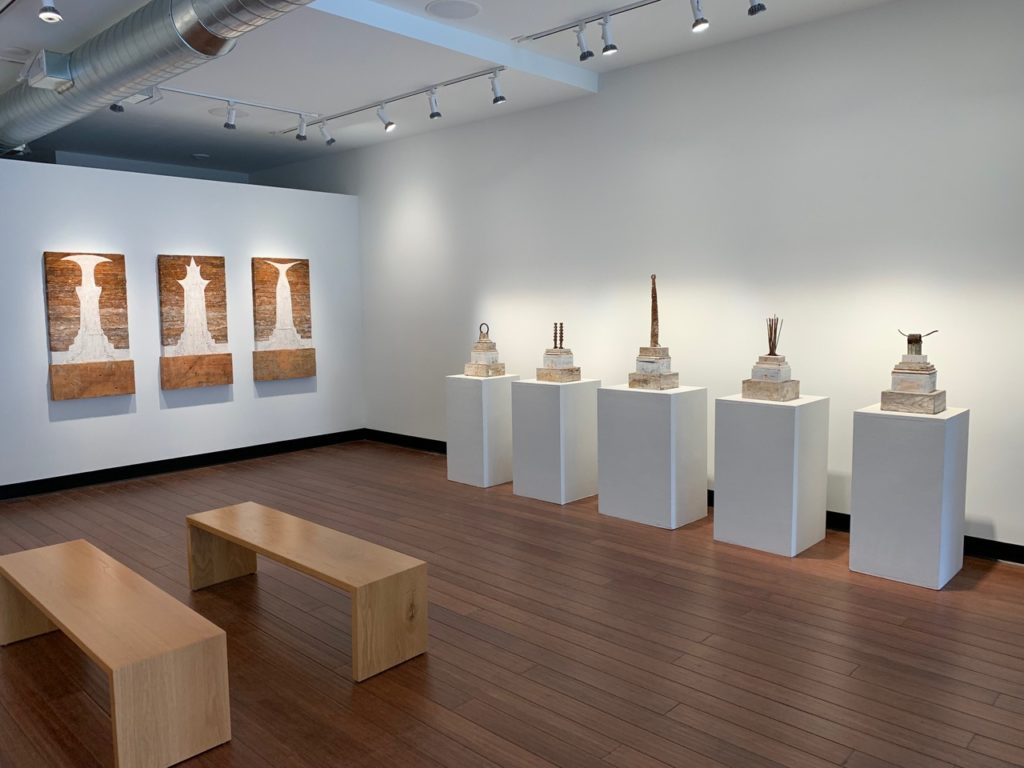 LM: Is the process limited to what you’re feeling in the moment with the materials?
LM: Is the process limited to what you’re feeling in the moment with the materials?
BS: There’s always more. I write a lot during that time. I’m listening. A lot. At some point it all coaleces into something mirroring back at me; it’s palpable, the studio energy changes, because something’s coming through clearly. And it’s coming from an unseen place I’m now attuned to. That’s when the powerful stuff happens for me.
LM: Your work has been described as “shamanistic”. Which in its simplest definition is a spiritual healer who uses trance and other altered-consciousness states to get in touch with worlds around us we don’t normally perceive.
BS: You’re talking about a big, huge underworld of how things maneuver in the universe. We love to be very concrete, all this stuff we can see. But like one side of a coin, that’s only one side. The shaman looks for things we can’t see. All the unsaid things. A shamanistic way of working has a sense of playfulness, an allowance for things to bubble up; you’re sensitive to the things you can’t see so you can pick up on them when they come into your view. It’s very intense, a lot of solitude, very monastic. My art has a symbolic feeling in an abstract way and that comes through manipulating these humble materials in a sophisticated way.
LM: What the world is going through now with the pandemic and other social change movements … how might that affect your art?
BS: I don’t quite know how I’m going to translate all this into my type of artistic expression. It’s so big, but at the same time, it has to become personal to have something to express. You can’t not be changed some fundamental level by what’s happening. Creative people are holding this energy now. As an artist, this is going to be a big, huge spot in time … to look back on this and see how things have grown and we all processed things.
Perhaps you can’t see it yet, but you can feel it. It’s the energy of palpable, powerful turmoil — all these cycles are happening simultaneously. All these old wounds, and you’re trying to heal also. Whoever you are, every wave is being turned. What you can see on the surface, it’s the undercurrent churning underneath. It’s like a tectonic plate, the very base of everything is completely shifting with eruptions on the surface. For me, it will definitely mark a beginning, a new body of work or a new attempt to explore things for myself. I try not to intellectualize, because so much of what we’re experiencing has so many layers to articulate. I’m doing a lot of listening and paying attention. That’s the mode I’m in now.
LM: How do you compare what might be coming with the Consecrated show that represents past work?
BS: Consecrated is a well-balanced, calm show that pulls you in. And it’s nice to be able to say that. One of the inspirations were poems I read in Rainer Maria Rilke’s Book of Hours from the late 1800s, like this one: “She who reconciles the ill-matched threads of her life and weaves them gratefully into a single cloth, it’s she who drives the loudmouths from the hall and clears it for a different celebration.” Is that not gorgeous?
Allowing yourself to be changed and see things differently is a fundamental principle of art. It provides revelations. I need revelations where I can follow something I’m not that sure of … allowing myself to be lost for awhile so I can find new things. That’s glorious!



